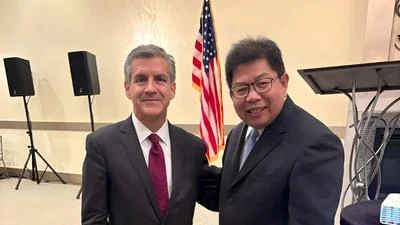At a glance
- Constructivism is a theory that promotes learning as an active and internal process in which new information is added to a foundation of prior knowledge.
- Cognitive constructivism, social constructivism and radical constructivism are the three major types.
- Constructivist teaching promotes student input, collaboration and hands-on experimentation.
- Develop your skills as an educator with an education degree from University of Phoenix.
The constructivist learning theory is not just an interesting subject of psychological interest. It can help students and their teachers better understand how they can learn new skills and information.
Principles of constructivist theory
To understand constructivism, start with the following principles.
The active construction of knowledge
Constructivists believe learning doesn’t happen in a vacuum. Instead, the theory suggests that people internally and unconsciously relate new information with existing information. In this way, learners actively “construct” their knowledge: They organize information into a unique, individualized base of knowledge.
Experience is key
Cultural and personal experience, as well as ingrained psychological structures, form the basis upon which learners construct their reality.
Two students can absorb the same piece of information differently and according to the experience of each. Of course, the students may be able to recall the information identically, say, as the answer to a test question. How they recall that information, however, will be an individualized result of their unique experiences.
Reality is subjective
Due to the role personal experience plays in the learning process, a piece of information cannot be seen in solely objective terms. Reality itself, when understood this way, becomes something unique to each individual. For example, two students may see something they would both describe as the color red. Yet their individual experiences of “the color red” may be different, bringing up different associations or representing different things for each.
The importance of society, culture and language
While learning happens through an individual, internal process, it requires a social interaction.
For example, children do not learn their ABCs spontaneously and without outside (social) input. They require a teacher or parent to communicate that knowledge to them through language. At the same time, how they absorb that information will be internal and unique, based on a personal perspective of reality.
What’s more, this learned information will become the basis of further learning and how they experience additional external input. In other words, their experience of learning changes as they learn.
The question of a student’s progress in their education, then, is not just about the information they learn, but how they learn information. That can be an important insight for educators who want to change students from rote memorizers to curious, lifelong learners.
Types of constructivist learning theories
Over the course of decades, several psychologists have made important contributions to the discipline of constructivism. What emerges are three main types of constructivist learning theories:
- Cognitive constructivism
- Social constructivism
- Radical constructivism
In the mid-20th century, several psychologists became disillusioned with the behaviorist learning theories that were dominant at the time. In particular, they were critical of behaviorism’s focus on behavior that could be observed externally, and what they felt was its disregard for the internal psychology of individuals.
Most influential of these critics was Jean Piaget, a Swiss-born psychologist who specialized in childhood psychology. He proposed that psychologists pay more attention to the interior lives of their subjects, that the internal process of learning varies for each individual.
Piaget proposed that learning consists of several successive stages — a process of organizing information that begins at a basic level and progressively grows more complex.
This process is called equilibration. According to Piaget, learners take in new information and integrate it with what they already know. That updated formation becomes a new equilibrium from which the learner takes in the next piece of information. For example, a student who already understands fractions will use that understanding to learn a new and related concept, such as percentages.
In Piaget’s understanding, knowledge does not ever stand on its own. It is constantly being related to, combined with and built out of existing knowledge.
Due to the role personal experience plays in the learning process, a piece of information cannot be seen in solely objective terms. Reality itself, when understood this way, becomes something unique to each individual. For example, two students may see something they would both describe as the color red. Yet their individual experiences of “the color red” may be different, bringing up different associations or representing different things for each.
Social constructivism
Piaget and other cognitive constructivists did much to break learning theories away from behaviorism. Their theories, however, conceived of the learner as an independent entity absorbing information from the environment. That process could be seen as essentially spontaneous and independent, something that happens every time a learner comes in contact with a new piece of information.
Proponents of social constructivism did not think that went deep enough. Soviet psychologist Lev Vygotsky developed this subdiscipline, proposing that learning could not be separated from its social context. For Vygotsky, learning is a collaboration in which culture and language play a major role in cognitive development.
Central to his theories is the zone of proximal development (ZPD). As a metaphor, Vygotsky placed in the center of a circle everything a student can do without a peer, teacher or mentor helping them. At the very outside of this circle are things the student cannot do. Between the two circles lies an area of activity that the student can do, if taught by a knowledgeable peer or mentor. That area is the ZPD.
Why is this concept important for educators? When students’ educational goals are within their ZPD, they are able to incorporate new concepts into their knowledge base while relating it to what they already know. This allows educators to “scaffold”: They can support students in new tasks and slowly remove that support as the students become more competent in those tasks.
Radical constructivism
For Piaget and Vygotsky, the process of equilibration results in subjective knowledge constructions that approximate some external objective reality. Taking the work of his predecessors a step further, German-born philosopher Ernst von Glasersfeld proposed that objective reality does not exist. In other words, he proposed that subjective knowledge constructions are the entirety of a person’s reality.
For von Glasersfeld, it is impossible to take knowledge out of its subjective context. “To assess the truth of your knowledge,” he wrote, “you would have to know what you come to know before you come to know it.”
He is not saying necessarily that the capital-T Truth of things does not exist, but that individual people are not in a position to know it. The constructivists say that new knowledge (objective, shared) builds on existing knowledge (subjective, personal.) Von Glasersfeld simply takes that concept to its most radical form: that at their most basic level, human beings grow what they know from a place of subjectivity.
If this makes your head hurt, that’s OK. What’s important here, particularly for educators, is that who people are and how they learn are deeply connected. In practice, standardized curricula do not always take this concept into account. When educators can find ways to connect lessons to individual student experiences, it can help make lessons stick.
Constructivism in the classroom
How can educators apply the principles of constructivism to their teaching? A constructivist approach to curriculum can leave students feeling empowered and excited to come to class every day.
Researchers Martin G. Brooks and Jacqueline Grennon Brooks define several principles of constructivist teaching in their 1993 book, In Search of Understanding: The Case for Constructivist Classrooms. The principles serve as guidelines for anyone looking to incorporate constructivist principles into curriculum.
Here is a rundown of some of the major principles of constructivist teaching, as outlined by Brooks and Brooks.
1. Promote student autonomy
According to constructivists, learning is an active process. For learning to occur, students need to bring their own experience and personality to the material.
For educators, that might mean getting away from dry lectures and rote memorization and instead asking students about what they want to learn about. From there, they can build the curriculum around students’ initiative and autonomy.
2. Use interactive materials
Allowing students to perform hands-on experimentation or engage with primary sources empowers them to better connect their experience to new information.
This type of learning often occurs in science classes, where students have the opportunity to conduct an experiment in conjunction with the material.
This principle has applications beyond science, however. Field trips to historical sites, for instance, can help reinforce a lesson in ways a textbook cannot.
3. Incorporate student input
Actively engaging students in classroom material, especially for dry topics, can be a tough challenge for educators. The first step? Create space for that engagement.
This might mean asking open-ended questions (instead of ones with clear right and wrong answers) to spur conversation and interest.
Before a lesson begins, educators can also try asking students about what they already know about a subject. This can get them engaged, as well as give educators a better understanding of where to take the lesson plan from there.
4. Create an environment of collaboration and dialogue
A major aspect of constructivist teaching is the role of the teacher as the “facilitator” of education, not the “administrator.” That means creating an environment in which students can learn new things through their own insight and initiative.
Along with asking open-ended questions, educators can follow up with how a student responds. Asking further questions, or inviting input from other students, can help that student clarify their answer. This can deepen their learning about a subject, all while getting them more engaged in the classroom.
Researcher and professor Peter C. Honebein (1996) defines seven goals of constructivist classrooms:
- Students primarily decide how they learn.
- Multiple perspectives are incorporated.
- Material is connected to a real-world context.
- Students feel empowered in their autonomy.
- Collaboration is promoted.
- Learning material spans media, including text, audio and video.
- Students learn to be better learners.
As these goals illustrate, there are numerous ways an educator can leverage constructivist theories to improve student engagement. At its best, these principles mold lifelong learners who are curious, attentive and excited about their education.
Critiques of constructivism
Constructivism has its proponents — and its critics. For many educators, the collaborative, decentralized approach has its flaws. Here are some major critiques of constructivism:
Lack of structure
Perhaps the biggest criticism of constructivism is its potential lack of structure. While some students may engage more with learning when given the reins, others benefit more from explicit direction.
At the end of the day, there is a certain amount of material that educators are required to cover in a semester. Letting students define the pace of their learning can make progress irregular, which can make it difficult to cover everything that needs to be covered.
Does not work well for all ages
A central tenet of constructivism holds that students build upon existing knowledge when learning something new. Older students, who have successfully learned how to learn, are familiar with this process. Younger students, on the other hand, may not be.
Generally speaking, younger students have not built up the cognitive skills necessary for guiding their own learning. They may need stricter direction than a constructivist might suggest.
Not great for every subject
When students need to learn an equation, it may not be worth the time and effort to make it a hands-on collaboration. They may just need to know and memorize the equation through direct instruction.
Not every subject, in other words, should be made into a project or activity. Understanding the difference between what works well for that approach and what doesn’t can help educators implement constructivist principles in the way that most benefits their students.
The importance of learning theories in education
Constructivism, along with other learning theories, is just another tool in the teacher’s toolbox. Certain principles may be applicable to one classroom and out of place in another.
Every student is different. That is perhaps the biggest lesson to be drawn from constructivism. When engaged on an individual level, a student has a better chance of succeeding in their education. Taken a step further, educators who engage in this way can cultivate an excitement for learning that lasts a lifetime.
Original source can be found here.





 Alerts Sign-up
Alerts Sign-up